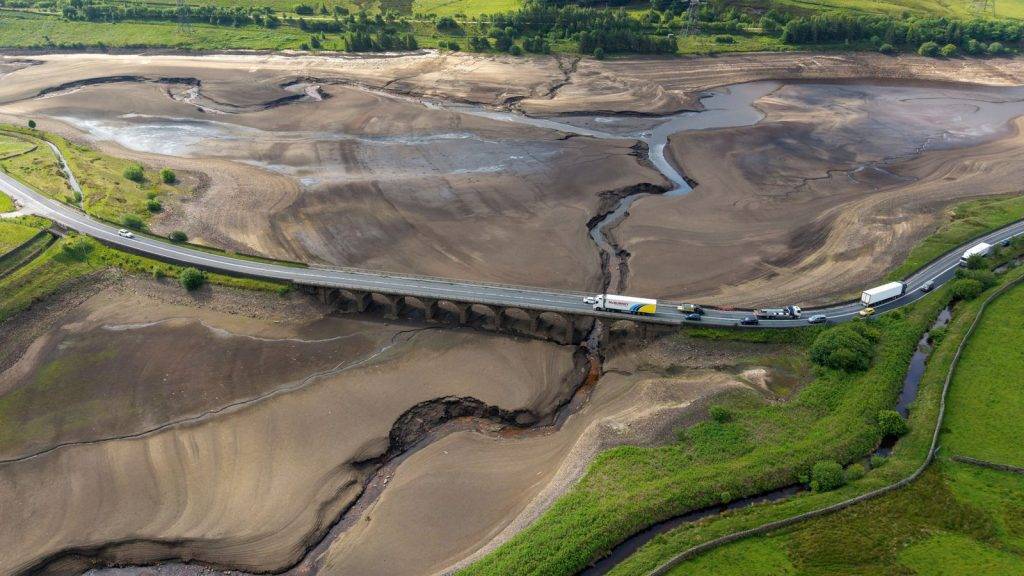Cliff Notes
-
The East and West Midlands are now in drought, joining other affected regions like the North West of England and Yorkshire following the driest start to a year since 1976.
-
Eight million people are expected to face water use restrictions, including potential hosepipe bans, due to significantly below-normal reservoir and river levels.
-
An expert highlights that inadequate government planning and aging infrastructure contribute to current water supply issues, with the last UK reservoir built in 1992 amid a growing population.
East and West Midlands are latest regions officially in drought – which areas could be next?
.
The East and West Midlands are officially in drought after the driest start to a year since 1976.
The two regions join the North West of England and Yorkshire, which have had drought status for several weeks.
The decision by the government’s National Drought Group makes it more likely that people in the areas will be affected by hosepipe bans.
Check the latest weather forecast here
Currently, eight million people have restrictions on water use, or will do so in the next week.
Experts from the government, water companies and the Met Office judged that reservoir and river levels in the Midlands were well below normal, with no substantial rain in the forecast.
Nationally, reservoirs are on average just 76% full, below the level of the severe drought in 2022.
But Howden reservoir in Derbyshire is just 39% full, with three heatwaves so far this summer rapidly draining supplies.
After the meeting by the government group, water minister Emma Hardy MP said: “We need to stop talking about these being extreme weather events and start to accept that because of climate change, things like this are going to be more normal.
“So as for whether more companies will introduce temporary use bans, that really genuinely depends on what happens with the weather over the next few months.”
The Environment Agency has drawn up a reasonable worst-case scenario in which England receives 20% less rain than normal and the weather remains warm, but not hot – far from improbable.
In that case, the drought will grow to include all regions down to Wessex, Hampshire and across to Cambridgeshire by the autumn.
The rest of the country would be in a pre-drought status – officially called “prolonged dry weather” – apart from Devon and Cornwall, which have had more rain over recent months.
But a water expert has told Sky News that poor planning by the government and water companies is also to blame for regions being affected by drought and hosepipe bans.
Professor Richard Ashley, of the University of Sheffield, said a failure to build new reservoirs, link up water grids across regions and fix leaks has undermined water security in the face of dry weather.
“We do have a largely Victorian-based supply system,” he said.
“A lot of our infrastructure is in desperate need of upgrading, and replacement of water mains is of the order of once every hundred years in this country, and that frankly is shocking.
“This is outdated thinking and outdated infrastructure to cope with problems of the now and the future.”
The last reservoir built in the UK was in 1992. Since then, the population has grown by 12 million.
And water companies currently lose three billion litres of water a day through leaks.
Even on the day that the official drought was expanded, a burst water main in south London resulted in a flood that closed schools and forced homes to be evacuated


